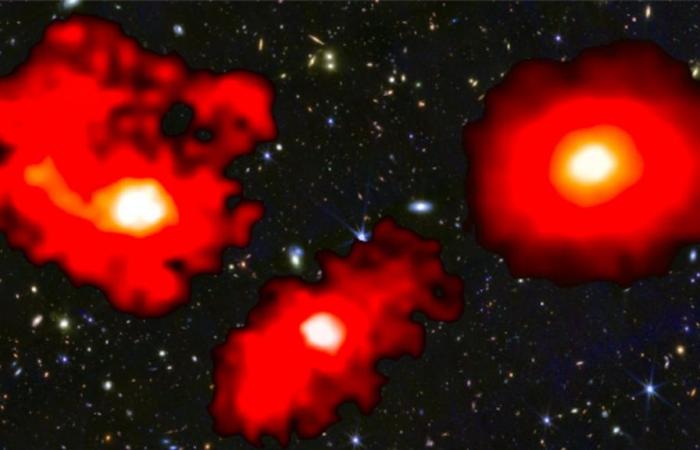According to the theoretical model favored by scientists, galaxies gradually form within vast halos of dark matter. These capture the gas (atoms and molecules) to make structures linked by gravitation. Typically, only 20% of this gas is converted into stars in galaxies.
However, new findings from an international team led by the University of Geneva (UNIGE) and using NASA’s James Webb Space Telescope (JWST) challenge this theory. Published in Nature, they reveal that the massive galaxies of the early Universe may have been much more efficient at building stars than their later counterparts, and that they grew much faster than previously thought. thought so far.
The unparalleled capabilities of JWST have enabled astronomers to study galaxies in the very distant and therefore young Universe, and to obtain information about massive galaxies and galaxies obscured by dust. By analyzing the galaxies from the FRESCO study, scientists found that most sources are consistent with existing theoretical models.
However, they also discovered three surprisingly massive galaxies, whose stellar mass is comparable to that of today’s Milky Way. These galaxies form stars almost twice as efficiently as their lower mass counterparts and older galaxies. Due to their high dust content, which gives them a distinct red appearance in JWST images, they have been named the three “red monsters”.
“Our results redefine our understanding of galaxy formation in the young Universe,” says Mengyuan Xiao, lead author of the new study and postdoctoral researcher in the Department of Astronomy of the Faculty of Sciences at UNIGE. David Elbaz, research director at CEA Paris-Saclay adds: “The massive properties of these ‘red monsters’ had hardly been determined before JWST, because they are optically invisible due to dust attenuation.”
The international team developed a new program with JWST to systematically analyze a complete sample of emission-line galaxies in the first billion years of cosmic history. This approach allowed the team to obtain accurate distance estimates and reliable stellar mass measurements for the entire sample of galaxies.
“The instrument aboard the space telescope, NIRCam/grism spectroscopy, allows us to identify and study the growth of galaxies over time, and to obtain a clearer picture of how stellar mass accumulates over the course of cosmic history,” explains Pascal Oesch, associate professor in the Department of Astronomy at UNIGE, principal investigator of this observation program.
Although these results do not contradict the standard cosmological model, they raise new questions for theories of galaxy formation, particularly the problem of “too many and too massive” galaxies in the early Universe. Current models may need to take into account the unique processes that allowed some early massive galaxies to achieve such efficient star formation and thus form very quickly, very early in the Universe.
Future observations from JWST and the Atacama Large Millimeter Array (ALMA) will help learn more about these ultra-massive “red monsters” and reveal larger samples from these sources. “These results indicate that galaxies in the early Universe were able to form stars with unexpected efficiency. When we study these galaxies in more depth, they will offer new insights into the conditions that shaped the early epochs of the Universe. The red monsters are just the beginning of a new era in our exploration of the early Universe,” concludes Dr. Mengyuan Xiao.






